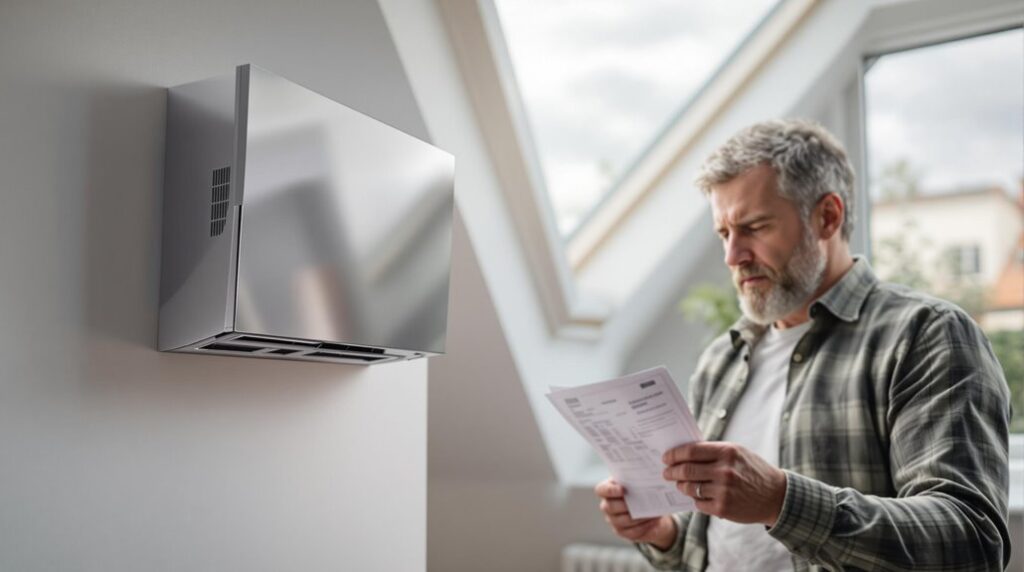I’ve spent considerable time analyzing MVHR systems for UK homes, and I’ll be direct with you—the reality doesn’t match the marketing hype. While these systems promise fresh air and energy savings, I’ve discovered significant drawbacks that most installers won’t discuss upfront. The initial investment is substantial, but that’s just the beginning. From humidity control failures to unexpected noise issues, there are critical factors that could make you question whether this technology suits British housing.
Key Takeaways
- High upfront costs averaging £6,450 plus ongoing expenses of £400-£800 annually make MVHR a significant financial commitment.
- Complex installation requires specialized expertise, with DIY attempts often failing and needing costly professional reconfiguration.
- Systems struggle with UK humidity management, lacking dedicated dehumidification features and relying only on air exchange rates.
- Noise issues from cheaper units and undersized ductwork affect over 70% of installations, requiring professional calibration.
- Energy efficiency depends heavily on home airtightness, which most UK properties cannot achieve for optimal performance.
High Upfront Investment and Ongoing Running Expenses
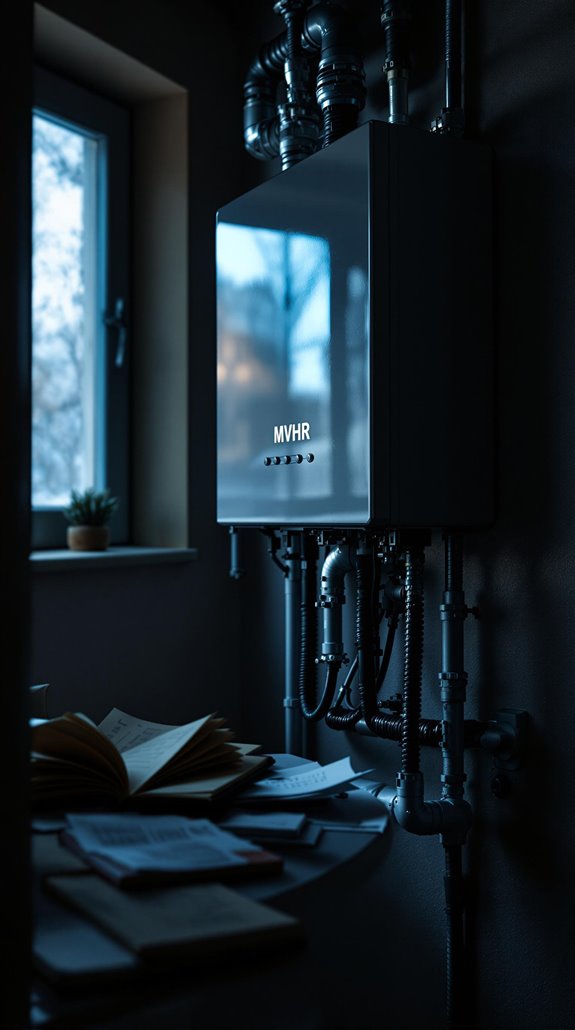
While MVHR systems offer long-term energy savings, the initial financial barrier remains substantial for most homeowners. I’ve found that average domestic installations cost £6,450, with complete systems ranging from £3,000 to £7,000. You’re looking at significant expenses across multiple areas: basic units cost £1,500-£2,000, while premium models reach £4,000. Installation labor adds considerable expense—I’ve seen quotes of £2,730 for a 150m² home alone.
The costs scale with property size too. Design and commissioning for a 150m² home runs £5,267 excluding VAT, jumping to £8,254 for 350m² properties. Ducting installation typically costs £2,250 for standard homes, plus electrical work and system commissioning. Additionally, VAT complications can further increase costs, with standard rates at 20% though new builds may qualify for zero VAT and vacant properties potentially incur 5% VAT. These upfront investments can strain budgets, making MVHR systems challenging for cost-conscious homeowners despite their efficiency benefits. Homeowners should also be aware of regional price variations that can impact overall renovation expenses, further complicating financial planning.
Complex Installation Requirements and Design Pitfalls
Although MVHR systems promise excellent energy efficiency, their installation complexity creates multiple failure points that can compromise performance and increase costs. I’ve seen countless DIY attempts fail because proper installation demands specialized expertise—from conducting thorough site surveys to positioning vents strategically away from pollution sources and ensuring airtightness meets minimum thresholds. The importance of structural inspections cannot be overstated, as they help identify potential issues early on.
The ductwork installation alone presents significant challenges. You’ll need rigid, correctly-sized ducts with fully sealed joints, proper insulation to prevent condensation, and meticulous planning for future maintenance access. Professional reconfigurations after DIY attempts typically improve performance by 30%, but you’re paying twice. Common DIY mistakes include incorrect duct sizing, which leads to increased noise levels and compromised system efficiency.
Without certified expertise, you risk non-compliance with Part F building regulations and substandard performance that increases long-term costs while potentially causing structural damage.
Demanding Maintenance Schedule and Associated Costs
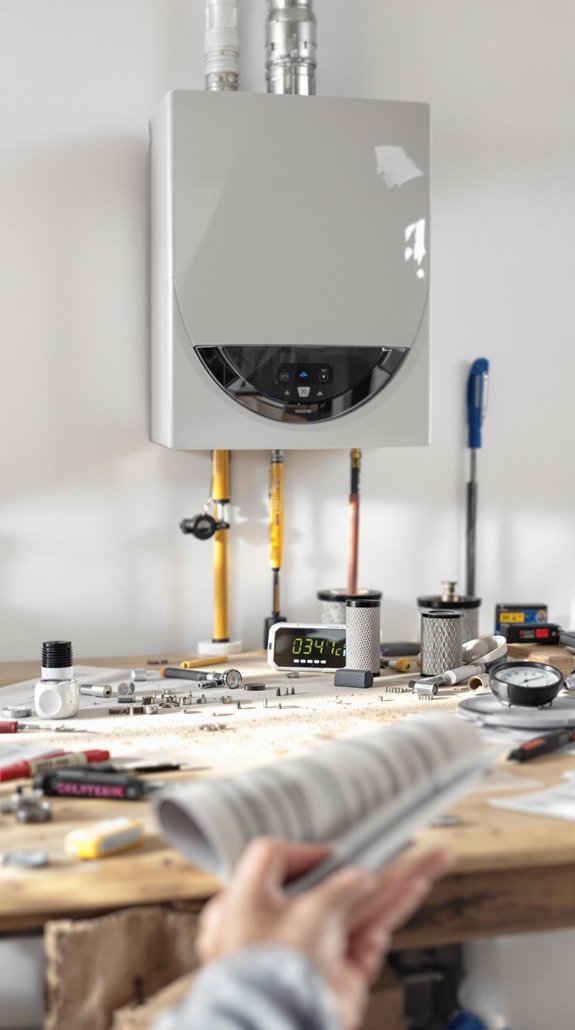
Beyond the installation headaches, MVHR systems demand a rigorous maintenance schedule that’ll greatly impact your ongoing costs. You’re looking at filter replacements every 6-12 months, costing £20-£120 per pair depending on your system and local pollution levels. Proper home insulation can help reduce the overall strain on your ventilation system by minimizing heat loss.
Professional servicing adds another layer of expense. I’d budget £150-£300 annually for proper maintenance, with deep cleaning required every two years to maintain warranty coverage. Skip this, and you’ll void your manufacturer protection.
Running costs hit approximately £156 yearly in electricity for a four-bedroom house. When you combine maintenance, filters, and electricity, expect £400-£800 annually in ongoing expenses. Many homeowners can handle general maintenance themselves, including cleaning or changing filters, which helps reduce some of these ongoing costs.
Limited Effectiveness in Managing UK Home Humidity
Despite manufacturers’ claims about superior humidity control, MVHR systems frequently fail to manage moisture levels effectively in UK homes. I’ve found that many installations suffer from consistently poor indoor air quality, suggesting inadequate moisture management during our climate’s variable conditions.
The overheating issues documented in multiple UK studies compound humidity problems. When your MVHR system can’t prevent excessive temperatures, it’s also struggling with moisture control since warm air holds more water vapor.
You’re fundamentally paying premium prices for a system that doesn’t adapt well to Britain’s humid summers and damp winters. The mechanical ventilation approach lacks dedicated dehumidification features, relying solely on air exchange rates that may prove insufficient during prolonged wet periods. While MVHR systems do recover heat from outgoing air to warm incoming air, this heat recovery process can actually exacerbate humidity issues by maintaining moisture levels rather than reducing them.
This limitation represents a significant performance gap you’ll need to address separately.
Noise Issues and Space Requirements
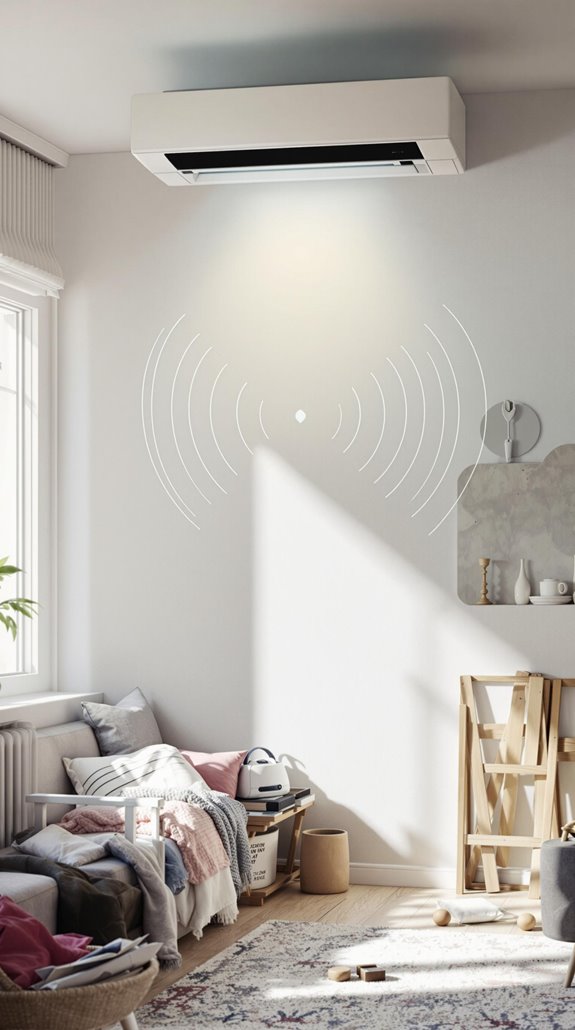
While MVHR systems promise whisper-quiet operation, you’ll likely encounter significant noise issues that manufacturers downplay during sales presentations. I’ve found that cheaper units with AC motors create persistent humming that transmits through building structures, particularly problematic in bedrooms where UK regulations mandate ≤30 dB limits. Undersized ductwork generates turbulent “whooshing” sounds, while poorly sealed diffusers whistle annoyingly.
Space requirements compound these problems. You’ll need dedicated utility room space for the unit itself, plus 100-150mm void depths for ductwork routing throughout your home. Retrofit installations often force creative compromises, sacrificing storage areas or requiring expensive loft conversions. Post-installation noise complaints account for 70%+ of system issues, making professional calibration and acoustic ducting essential but costly additions. Installing sound attenuators can reduce inline noise by up to 15 dB, though this adds further expense to an already costly system.
Poor Performance in British Weather Conditions
British weather conditions expose fundamental design limitations that manufacturers rarely acknowledge when promoting MVHR systems. I’ve found that high-efficiency units (over 90%) struggle with frost formation below -2°C, where condensate freezes and blocks the system. At -3°C outside temperatures, you’re looking at 3.6g of frozen condensate per cubic meter of extract air.
The cooling capacity issue is equally problematic. MVHR operates at just 0.5 air changes per hour on boost, but effective cooling requires 2 air changes per hour. This makes overheating inevitable during British summers.
Studies consistently show these systems underperform in our climate. The Zero Carbon Hub and Innovate UK found poor indoor air quality and overheating issues, while actual energy consumption averages 40kwh/m²/yr—double the promised 15-20kwh/m²/yr target. Performance deteriorates further when inlet vents are positioned too close to exhausts, creating circulation problems that compromise air quality throughout the home.
Energy Efficiency Concerns During Winter Months
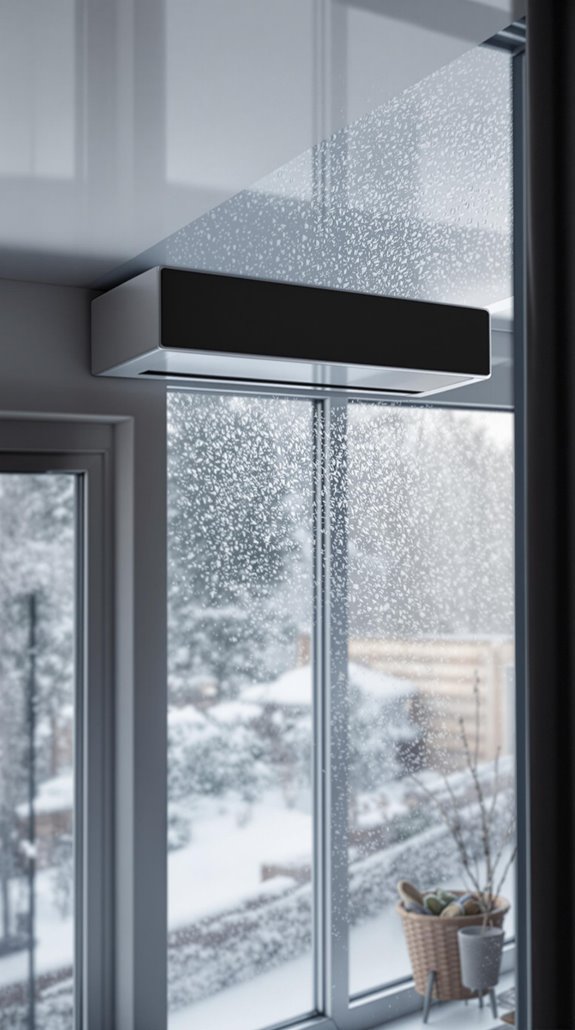
Although MVHR systems promise significant energy savings, their winter performance reveals concerning electricity consumption patterns that undermine their efficiency claims. I’ve found that continuous fan operation consumes 0.194 kWh daily, totaling 5.82 kWh monthly when you need heating most. This constant electricity demand directly impacts your winter energy bills.
The efficiency problem worsens in typical UK homes. Unless your property achieves exceptional airtightness below 5 m³/m².h at 50Pa, heat bypasses the recovery system through leaks, reducing savings substantially. Most existing British homes can’t meet this standard without extensive retrofitting. Despite manufacturers claiming efficiency above 80%, real-world performance depends heavily on your home’s actual air leakage rates.
I’ve noticed another issue: constant ventilation rates regardless of outdoor temperature. During mild winter periods, you’re fundamentally over-ventilating, wasting recovered heat. Without smart controls adjusting for occupancy and conditions, you’re paying for unnecessary energy consumption when heating costs peak.
Compatibility Problems With Traditional UK Heating Systems
Beyond winter efficiency losses, MVHR systems face considerable compatibility barriers with established UK heating infrastructure. I’ve found that traditional radiator systems create vertical heat gradients that directly conflict with MVHR’s downward air supply, disrupting the intended thermal comfort. Additionally, underfloor heating systems may offer a more harmonious integration with MVHR, as they distribute heat more evenly across spaces, enhancing overall energy efficiency.
Your existing boiler likely lacks smart controls needed to synchronize with MVHR ventilation cycles, creating operational conflicts. Non-modulating thermostats and manual radiator valves counteract MVHR’s automated temperature balancing, reducing system effectiveness.
Physical constraints present major challenges. Ducting requires ≥75mm diameter, competing with existing pipework in ceilings and walls. Heat exchanger units need dedicated plant rooms (≈1m²) that older homes rarely accommodate. The flat-channel ducts commonly found in older properties are particularly unsuitable for MVHR systems due to noise generation and airflow restrictions.
Integrated solutions like Viessmann One Base demand brand-matched components, limiting your flexibility and increasing costs considerably.
Conclusion
After analyzing MVHR systems thoroughly, I can’t recommend them for most UK homeowners. You’ll face £3,000-8,000 upfront costs, complex installations requiring skilled professionals, and ongoing maintenance expenses that quickly add up. The systems struggle with Britain’s humid climate, generate disruptive noise, and often perform poorly during our unpredictable weather. Unless you’re building a new passive house with specific design requirements, traditional ventilation methods offer better value for money.
References
- https://www.heatspaceandlight.com/problems-mechanical-heat-recovery-units-explained/
- https://www.ventilation-alnor.co.uk/index/support/alnor-knowledge-base/heat-recovery/mvhr-system-mistakes.html
- https://smart-hrv.co.uk/mvhr-vs-air-conditioning/
- https://www.homebuilding.co.uk/advice/MVHR-disadvantages
- https://ventilationmegastore.co.uk/mvhr-blog/disadvantages-of-mvhr/
- https://www.mybuilder.com/central-heating/price-guides/mvhr-installation-cost
- https://www.heatspaceandlight.com/much-mvhr-cost-design-install/
- https://www.checkatrade.com/blog/cost-guides/mvhr-cost/
- https://www.myjobquote.co.uk/costs/installing-heat-recovery-system
- https://www.homebuilding.co.uk/advice/mvhr-system-cost

